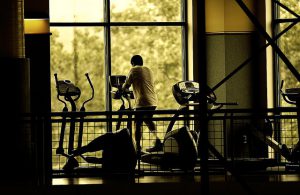Many factors can cause back pain, but a sprain or strain of the back mostly is the main cause. This is usually due to overuse or improper use of muscles and joints in the back. Sleeping in an awkward position, lifting something heavy, or movement that stresses the muscles too much, like coughing, sneezing, and bending over too far, can cause back pain. It can also be due to a past injury that has not healed correctly. The following are some of the common causes of back pain at a young age.
1. Wrong Sitting Posture
A wrong sitting posture for a long time is an occupational hazard. When you sit in improper posture, it leads to severe diseases like scoliosis and spinal compression. Excessive strain can result in a herniated disc. It is a condition in which the nucleus pushes through the outer ring, causing a bulge that can press against adjacent nerves.
Herniated disc symptoms vary widely depending on their position. This condition paves the way to an episode of low back pain or a long history of intermittent episodes of low back pain.
The most common sitting postures are the slouched, stiffly upright, or slumped forward positions. But the correct posture is the natural, relaxed position where you maintain a straight spine by tucking your pelvis under you. It would help if you balance your head on top of your spine, following its natural curvature, and your shoulders should be in a relaxed position, not drawn back or tense against your ears.
2. Obesity or Overweight in Young People
A new report by the Organization for Economic Co-operation and Development has looked at how obesity rates are changing among young people. They found that obesity rates have increased in all regions of developed countries for both boys and girls.
The report suggests that more children are eating unhealthy food, they don’t eat enough fruit and vegetables, and they’re not getting enough physical activity to get rid of calories from the food they eat.
Inadequate exercise may result in decreased flexibility and weakening muscles in the back, thighs, and pelvis. It might cause the pelvis to tilt too far forward by increasing the curve of the lower back. This can be harmful to appropriate posture, and as posture deteriorates, other areas of the spine, particularly the neck, may become painful.
This is a worrying trend as being overweight or obese during childhood may lead to other health issues, including high blood pressure, type 2 diabetes, stroke, heart disease, and some cancers later in life.
3. Hyperextension of the Spine
Hyperextension of the spine is a condition that is commonly seen in people who spend hours sitting down. Extended periods of sitting can cause this condition, and it can be excruciating. The most common cause of this condition is when individuals sit for long periods with their spine arched forward, causing a lack of blood flow. You can ease this condition by looking at posture and implementing stretches to keep your back healthy.
4. Poor Lumbar Strength and Stability
The human back has evolved to bear the body’s weight and allow for movement over long periods. Its complex structures work together to support and protect our spinal cord, discs, nerves, muscles, bones, and joints. But these structures are not without their limitations in an active person’s day-to-day life.
Actions such as tripping, carrying heavy objects, or lifting improperly, may cause lumbar instability, which may cause injuries to the back, leading to severe consequences including debilitating pain and even paralysis if left untreated.
5. Lack of Enough Sleep and Poor Diet
When you fail to get enough sleep, your muscles will not have sufficient time to recover from the day’s activities. Lack of enough sleep will mean that your body does not have time to produce the much need anti-inflammatory compounds. This can increase back pain, mainly if it involves tissue inflammation.
On the other hand, eating anti-inflammatory foods such as those rich in vegetables, fruits, lean proteins such as chicken, fish, and healthy fats from nuts and olive oil can reduce inflammation in the body, worsening chronic pain and back pain.
Final Remarks
Back pain is one of the most common causes of disability worldwide. However, we can do many different things to prevent back pain from occurring in the first place. Try as much as possible to avoid lifting heavy things that might over-stretch your back. Most importantly, it is essential to exercise regularly and maintain a healthy weight to ensure that your spine remains properly aligned.

